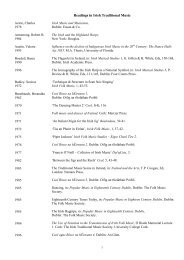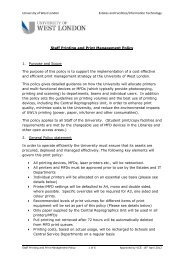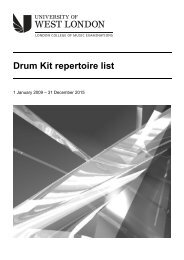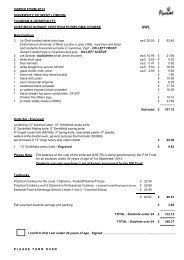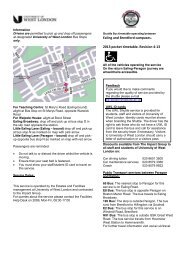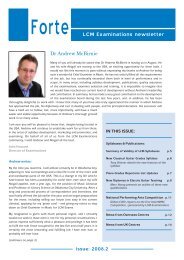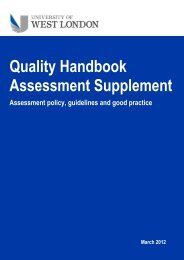LCM Exams - Jazz Diplomas Syllabus - University of West London
LCM Exams - Jazz Diplomas Syllabus - University of West London
LCM Exams - Jazz Diplomas Syllabus - University of West London
Create successful ePaper yourself
Turn your PDF publications into a flip-book with our unique Google optimized e-Paper software.
Figure 1:<br />
<br />
<br />
<br />
<br />
<br />
<br />
3. Dominant 7ths in all keys resolving on the tonic. Range: 3 octaves. To be played hands together or hands<br />
separately, legato, staccato, straight or swung, as requested by the examiner.<br />
eg. Dominant 7th <strong>of</strong> F (Figure 2):<br />
<br />
<br />
<br />
<br />
<br />
4. A chromatic scale, ascending and descending, in either hand, against an appropriate diminished 7th chord<br />
in the other hand, starting on any note. Range: 1 octave. To be played legato, staccato, straight or<br />
swung, as requested by the examiner.<br />
Example (Figure 3):<br />
<br />
<br />
C Dim7th<br />
<br />
<br />
<br />
<br />
<br />
5. To play the chords, in either hand, as selected by the examiners, as illustrated in Figure 4, in the keys <strong>of</strong><br />
C, G, D, A, F, B♭ and E♭. Major 7th and dominant 7th chords should be played with both hands, using<br />
creative and appropriate voicing, possibly by the use <strong>of</strong> chord extensions; examples are given below. The<br />
examiners may ask for the selected chords in any order.<br />
Figure 4:<br />
MAJOR C<br />
<br />
<br />
MINOR Cm<br />
<br />
AUGMENTED C+<br />
MAJOR 7th C^<br />
*<br />
<br />
DOMINANT 7th<br />
(or just '7th')<br />
C7<br />
*<br />
13




